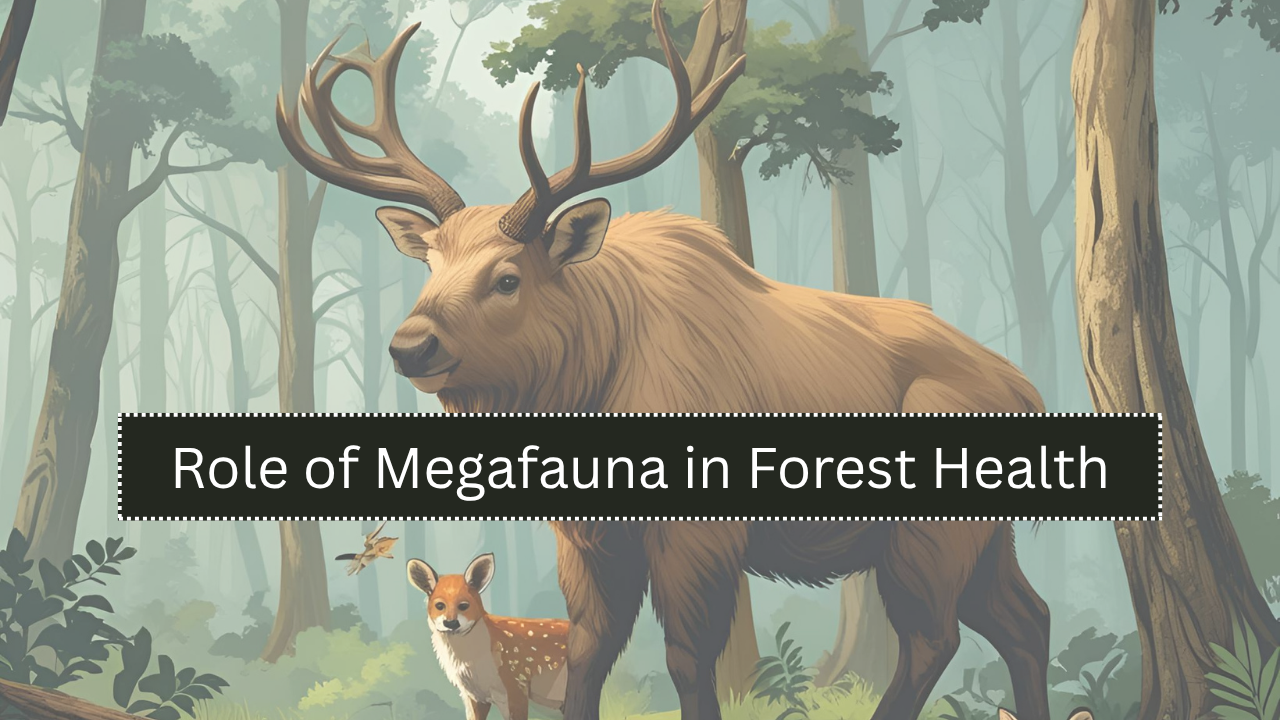Megafauna such as rhinos play an essential role in maintaining the health and sustainability of forest ecosystems. These large herbivores serve as ecological engineers, shaping vegetation, influencing seed dispersal, and regulating biodiversity. Forests benefit directly from the daily behavior of rhinos—grazing, trampling, and defecating—which supports regeneration cycles and the natural growth of trees and plants. Conservation of such keystone species is critical not only for the survival of the animals themselves but also for preserving the long-term integrity of forests around the world.
Ecological Role of Megafauna
Large herbivores like rhinos interact with forests in various ways, creating conditions that benefit multiple plant and animal species.
- Seed Dispersal
- Rhinos consume a wide range of fruits and excrete seeds across long distances.
- Their digestive systems soften seed coats, aiding faster germination.
- Vegetation Control
- Continuous grazing prevents any one plant species from dominating the area.
- This maintains biodiversity and reduces the risk of forest fires by managing underbrush.
- Soil Fertility
- Nutrient-rich dung supports microbial activity and adds organic matter to soil.
- Trampling also helps mix organic materials into the ground.
- Water Pathways
- Movements of rhinos often create trails that turn into natural water channels.
- These pathways help distribute rainwater evenly through the forest floor.
How Rhinos Support Forest Regeneration
Rhinos support the lifecycle of a forest through indirect and direct actions that sustain new growth and ecological balance.
| Function | Impact on Forest Regeneration |
|---|---|
| Dung deposition | Enriches soil and promotes growth of nutrient-demanding plants |
| Seed dispersal | Encourages genetic diversity among plant populations |
| Canopy opening | Trampling of vegetation creates light gaps for young trees to grow |
| Suppression of invasive | Grazing reduces spread of aggressive non-native plant species |
| Habitat creation | Trails and dung piles attract insects, birds, and small mammals |
Unique Characteristics of Rhino Ecology
Understanding specific ecological behaviors of rhinos helps highlight their importance in forest health.
- Selective Grazing Patterns
- Rhinos prefer particular types of grasses and shrubs.
- This selective feeding creates a mosaic of vegetation heights and species.
- Large Home Ranges
- Rhinos cover vast areas, ensuring a wide spread of nutrients and seeds.
- Forests receive consistent disturbance and enrichment over time.
- Low Reproductive Rate
- While slow to reproduce, each individual has a large ecological footprint.
- Fewer animals can still have a widespread environmental impact.
Benefits to Biodiversity
The presence of rhinos indirectly benefits numerous other species within a forest.
| Species Group | Benefit from Rhinos |
|---|---|
| Birds | Feed on insects found in dung; use disturbed areas for nesting |
| Insects | Thrive in dung piles; decompose organic material faster |
| Small Mammals | Inhabit burrows near rhino trails; benefit from altered vegetation |
| Trees | Germinate in dung-rich soils; sprout in cleared or trampled areas |
| Predators | Attracted to prey congregating in nutrient-rich clearings |
Comparison with Other Megafauna
While rhinos are not the only large herbivores, they have distinct traits that influence forest dynamics differently from elephants, bison, or tapirs.
| Species | Feeding Behavior | Forest Impact |
|---|---|---|
| Rhinos | Low-level grazing and browsing | Moderate canopy openings, focused dung fertilization |
| Elephants | Tree breaking, bark stripping | Drastic canopy loss, seed dispersal via large droppings |
| Bison | Grassland grazers | Maintain open meadows, suppress woody plant encroachment |
| Tapirs | Frugivores (fruit eaters) | Strong seed dispersal, but limited canopy interaction |
Threats to Rhino-Driven Regeneration
Various factors threaten rhinos and thus weaken their role in forest regeneration.
- Poaching
- The illegal horn trade leads to population decline, reducing ecological functions.
- Habitat Fragmentation
- Roads and farms split rhino territories, limiting movement and seed dispersal.
- Climate Change
- Alters food availability and water sources, stressing rhino populations.
- Human-Wildlife Conflict
- Farmers often kill rhinos entering agricultural lands, disrupting forest connections.
Conservation Solutions for Forest Sustainability
Restoration of rhino populations is directly linked to forest health, requiring both local and global efforts.
| Conservation Strategy | Expected Outcome |
|---|---|
| Anti-poaching patrols | Reduces illegal killing and stabilizes populations |
| Corridor creation | Allows safe movement for feeding and seed dispersal |
| Community engagement | Promotes coexistence and awareness among local people |
| Ecological monitoring | Tracks rhino impact and forest regeneration over time |
| Captive breeding and release | Supports population rebound and restores ecological functions |
Case Studies Demonstrating Rhino Impact
Examples from conservation zones showcase how rhinos enhance forest health.
- Kaziranga National Park, India
- Home to the largest population of Indian rhinos.
- Shows accelerated growth of grasses and shrubs due to grazing pressure.
- Hluhluwe–Imfolozi Park, South Africa
- A success story in white rhino conservation.
- Revealed stronger vegetation diversity in rhino-frequented areas.
- Ujung Kulon National Park, Indonesia
- Home to endangered Javan rhinos.
- Dense but biodiverse forests reflect indirect effects of limited rhino presence.
Long-Term Impact on Climate and Ecosystems
Large herbivores contribute to global climate regulation through forest health.
- Carbon Sequestration
- Healthy, regenerating forests store more carbon.
- Rhinos facilitate this through continuous regeneration cycles.
- Ecosystem Stability
- More balanced plant-animal interactions lead to resilient ecosystems.
- Reduced dominance of any one species ensures adaptability.
- Rainfall Patterns
- Forests influenced by rhino activity support cloud formation and local rainfall cycles.
Parting Insights
Rhinos are more than iconic wildlife species—they are integral components of thriving forest ecosystems. Their roles in seed dispersal, soil enrichment, and vegetation management foster a continuous cycle of regeneration that supports biodiversity and forest health. Protecting rhinos from extinction is essential not only for preserving their species but also for maintaining the balance and resilience of forest environments globally.

